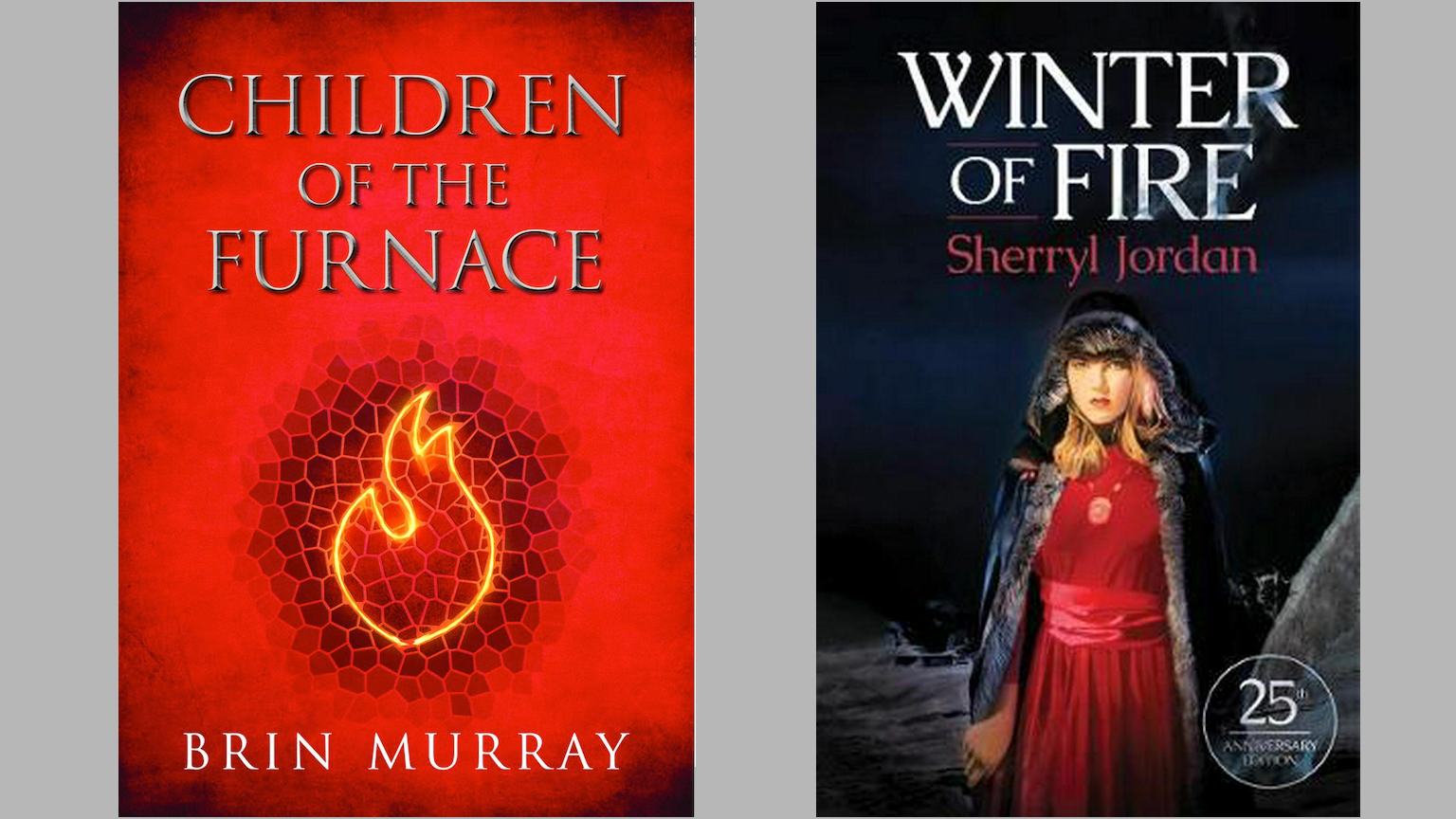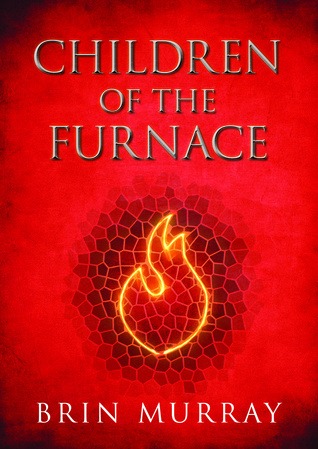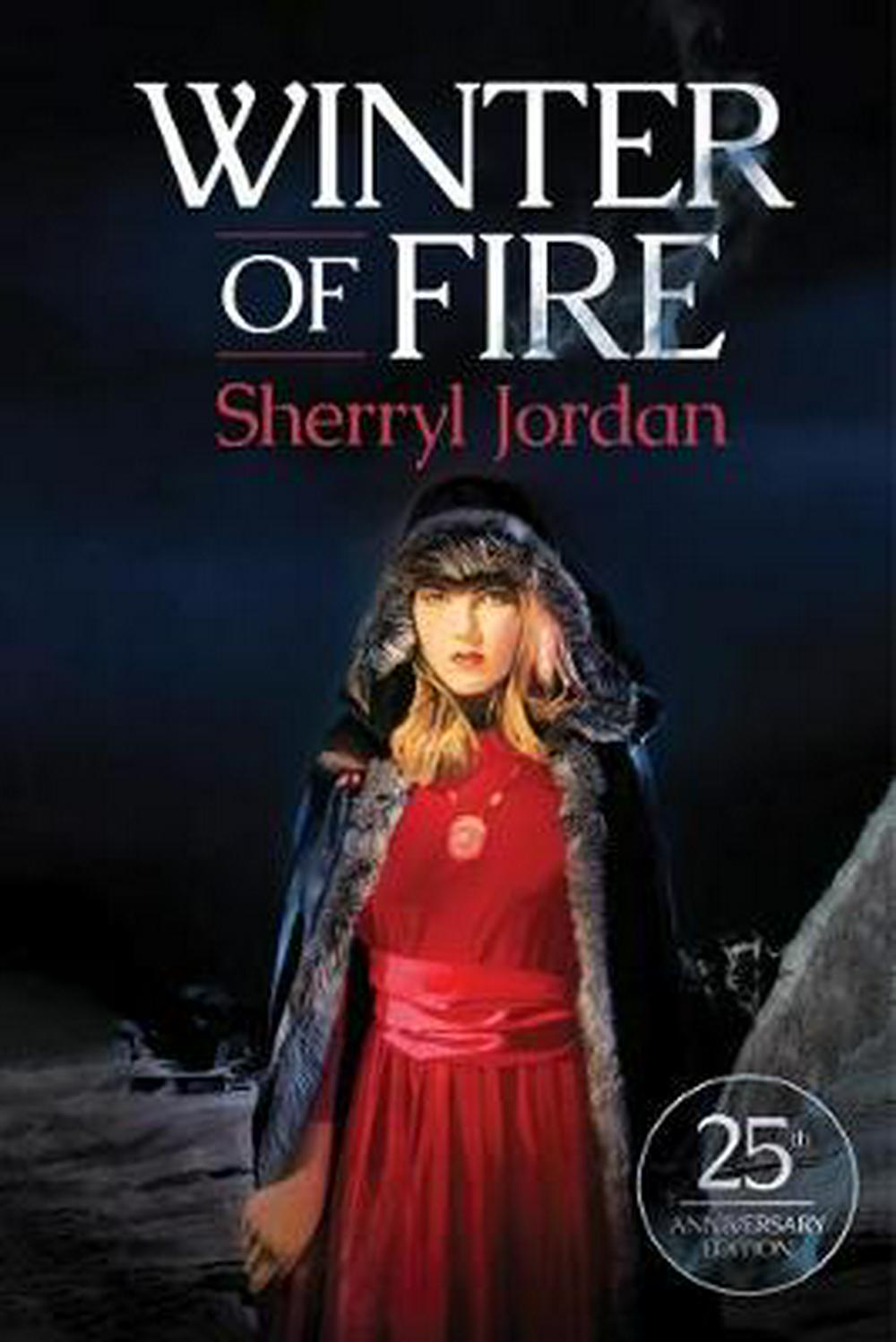Fantasy’s a funny word for the genre of imaginative worlds, considering how many of the places created are the last place anyone would ‘fantasise’ about living in. But naming conventions aside, it’s a beloved genre by many, including your team of Sapling editors. Here, Sarah reviews two local YA fantasy titles, one new release and one reissue, both set in bleak worlds with deeply engaging characters.

Children of the Furnace by Brin Murray (The CopyPress)
I’ll admit to approaching fantasy by independent authors with caution, and it wasn’t until it made the YA and Best First Book shortlists in the NZ Book Awards for Children and Young Adults that this book made it into my to-be-read pile. But I’m very pleased it did!
One of the first things I enjoyed about Children of the Furnace was that, while the plot was undeniably moving forward, the first three chapters weren’t just an information dump. We learn about the world that hero Wil has found himself at the same time he does; he comes from a different place, where the Revelayshun doesn’t usually reach.
When he comes across a Revout while going to find a place to release a huskwolf pup, he doesn’t know what is about to happen, all thanks to the ‘Heater mark’ loveknot tattooed on his forehead. Revouts are a type of priest, who preach against the Atrocity and put children in camps to make sure it doesn’t happen again.
Ferule is a camp in Sekkerland, which is where Wil finds himself after father figure Ty Shirwud is murdered before his eyes. He is there for redukayshun, and there is a whole new world whose rules he needs to learn in order to survive. Meanwhile, our other protagonist Leah is on a boat with other girls who are destined to come to Ferule and live in the Annex. The chapters are weighted roughly two to one in favour of Wil, and while Wil is fully alive in our imaginations, Leah loses what individualism we see in her on the boat when she meets Wil partway through the book.
There is a whole new world whose rules he needs to learn in order to survive.
Upon reaching Ferule, Wil is forcefully baptised by Revout Sachs, who is overall in charge of the faith part of the programme, though the Governor runs the school. After this, he fights the older boys – the Squadecs and Squadboys – as they try to scare him straight by burning him. The boys are divided into groups to work to help revive the destroyed world in which they live. They plant trees, bury helgas (which I interpreted as petroleum products) and other similar tasks.
The characters have an unusual way of speaking, and the book is written in their dialect. ‘Can’t believe I’m planting. Truth is, I’ve always liked planting… And yer in the open when yer plant, there’s no sawdust to breathe in and make your throat sticky and yer nose itchy, and on a good day with the sun out and the air clear feels like yer can see forever in Sekkerland.’ Wil works to gain the trust of Jace and some of the other Squadboys by going hunting – setting traps so the work parties get meat to eat, meaning they can strengthen up so they meet quota, resulting in fewer kids being whipped or hit with the nout.
Leah comes from Southem – a world that sounds more like our reality, with technology and vehicles. With her father lost, when Leah’s mother dies (with the final words ‘find the Midwife’) she takes transport to Sekkerland with a friend of her mother. What awaits her is marriage or a job, and because she is grieving she doesn’t care much which. She is portrayed as somewhat ruthless on the ship, but once she meets Wil and Jace off the transport she softens. Together, they survive a hard winter trek with the ingenuity of Wil, becoming friends. During the same trip to the dock, Wil meets a contact from home and learns he must find the Midwife.
What awaits her is marriage or a job, and because she is grieving she doesn’t care much which.
Back at Ferule, Wil has to learn to read and write, and learn the anthem and catechisms to save himself from being whipped. His roommate Patrice teaches him, with bits of paper stolen from Squadboys and the hospital wing. As the plot develops it continues to be pleasantly surprising, and Wil (and Leah) get their opportunity to go outside of the gates to Terra Nullius to find the Midwife.
I’ll let you read the book to find out if they succeed in their mission. This is a book about loyalty and uprisings, and a truth that will change everything. The setting is a cruel world, but nothing that is beyond belief, with the environmental disaster especially ringing true. The book ends on a high, but they are ready for the action in the second book, Crosstrees, and so am I.
I’d recommend this book to kids age 11+ who like unlikely hero stories. It does have torture, gratuitous violence, gruesome deaths and cruelty to animals in it, so be aware of those themes when recommending it to kids.

Winter of Fire by Sherryl Jordan (Scholastic NZ)
I was 13 when this book was published. But until earlier this year, when Catherine Woulfe interviewed Sherryl for The Sapling, I never knew it existed. Now, I must read all of her books. The magic in this book comes from within.
Winter of Fire is set in a post-apocalyptic world, where the sun has been blotted out by debris from a huge asteroid. It is cold, so it follows that the most powerful person in the world is a firestone diviner – the Firelord. There are two groups of people in this world, Quelled and Chosen.
When I began reading this book, I immediately started drawing parallels between more recent publications and this one. The Hunger Games, for one. It even shares use of the word Quell, though I’m not sure Winter of Fire was a worldwide publication, so I wouldn’t guarantee Suzanne Collins ever read it. Other more recent – and local – touchpoints include Ursa, by Tina Shaw; and A Place of Stone and Darkness, by Chris Mousdale. And, of course, Children of the Furnace.
All of those books are wonderful in their own right, but Winter of Fire now seems visionary. The Quelled are abjectly poor, and all over the age of five spend their days toiling in the mines, getting firestones (coal) out of the ground and giving them to the Chosen. The Quelled live in tents, the Chosen in towns. The Quelled are treated worse than animals – it is illegal for Chosen to look them in the eyes or even acknowledge that they have the power of speech. What does this remind you of?
Winter of Fire now seems visionary.
But what makes this book truly special is the character of Elsha. She is our heroine, and what a heroine. Born a Quelled and bearing the Quelled brand – not even worth the name woman, to the Chosen she is called harsha – she goes to the mine to be punished for not getting enough firestone one day, only to meet Amasai, steward of the Firelord. He comes across her as she yells at God, ‘You’re weak. Powerless. If you are real, come out and show yourself…’ He tells her she is to be the Handmaid of the Firelord and that he has been sent to get her. Amasai is surprised Elsha is harsha, but he knows his lord’s knowledge is great than his.
They travel, and Elsha goes to meet her lord. My favourite moment in the book is when the Firelord comes across her pretending to read from a scroll, ‘These are the myths of the Quelled, spoken by the wise woman, she who is called Elsha.’ The Firelord accepts her and her lionheart, and she goes with him from town to town as he divines the place where firestones can be found. She is not always accepted by the townspeople, despite his powerful defence of her, but makes friends along the way nonetheless.
As the Firelord’s power wanes, Elsha realises she has a power of her own: she too can divine the firestones. Not just her womanstone, which she keeps with her always, but any firestone around her.
Elsha is full of fire, and attracts people to her despite her low-born status. I enjoyed watching her fall in love over and over again, enjoying friendship-that-could-be-more, puppy love, lust, strong female friendship, and finally true love as her journey carried her on. Her emotions were accurate for a 16-year-old woman who has a mind of her own and a strong sense of morality with a good dash of romanticism. Her loves were never focused on what she could gain – only how she felt.
I enjoyed watching her fall in love over and over again… finally [finding] true love as her journey carried her on.
The writing is utterly beautiful, worshipping the earth and what it gives us. ‘Never had I been so conscious of the earth, of the toughness and fragility and flowing life of it. I realised for the first time that the stones were not dead, nor the dust devoid of life, nor the waters vacuous. Our earth lived…’ This ecological sensibility is strong, and plays a part in how Elsha carries out her destiny.
Elsha fights the patriarchy on their own turf, and does it better than anybody, even throwing a little bit of heat magic in the mix. She is everything a teenage girl could aspire to be, and more. I wish I had read this when I was 13, but even at 38, it makes me want to go and kick some ass. Highly recommended.


Sarah Forster has worked in the New Zealand book industry for 15 years, in roles promoting Aotearoa’s best authors and books. She has a Diploma in Publishing from Whitireia Polytechnic, and a BA (Hons) in History and Philosophy from the University of Otago. She was born in Winton, grew up in Westport, and lives in Wellington. She was a judge of the New Zealand Book Awards for Children and Young Adults in 2017. Her day job is as a Senior Communications Advisor—Content for Te Herenga Waka—Victoria University of Wellington.



